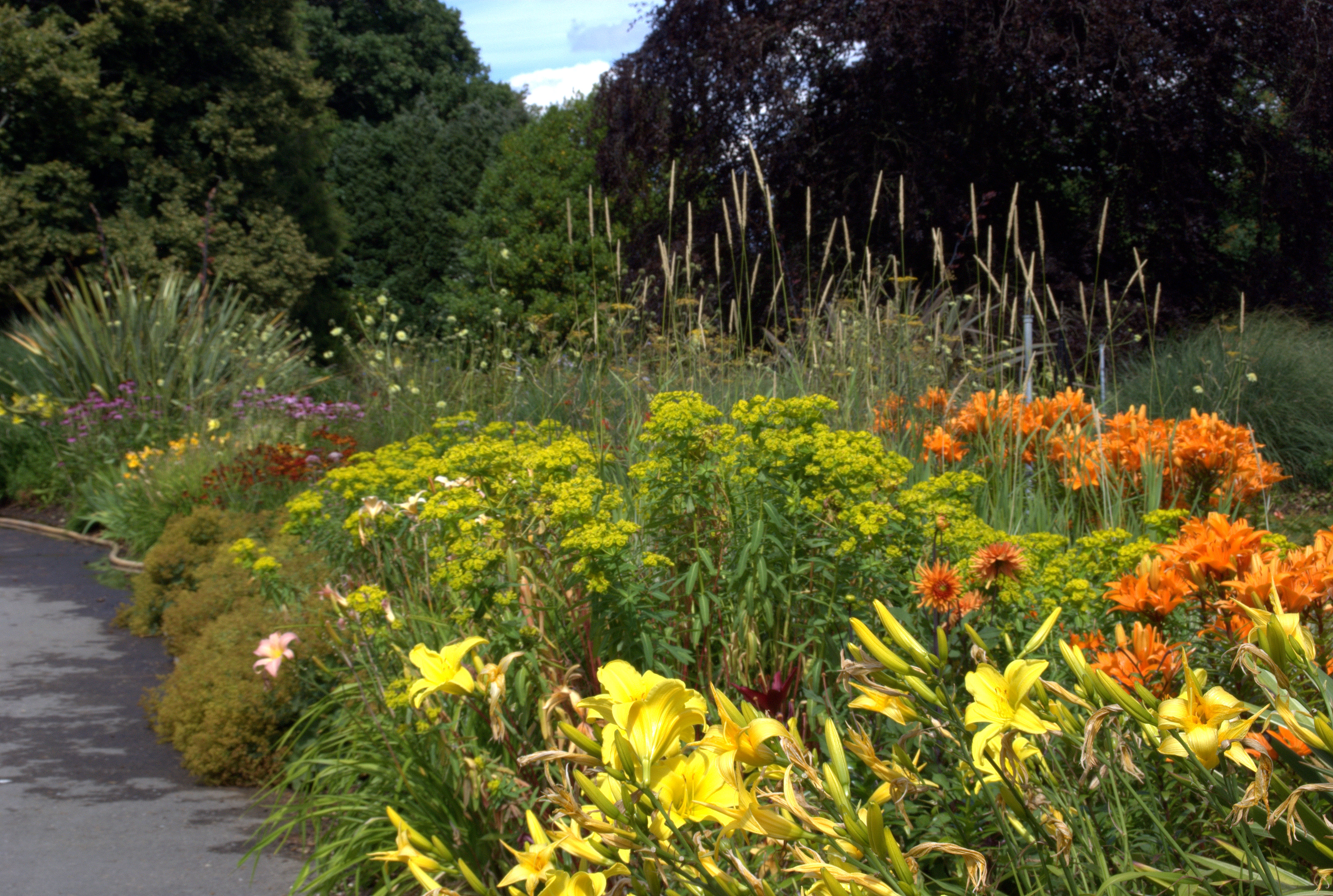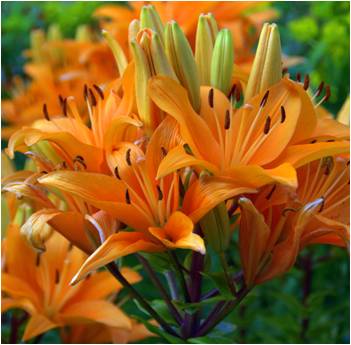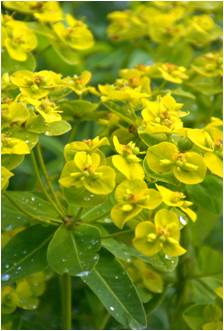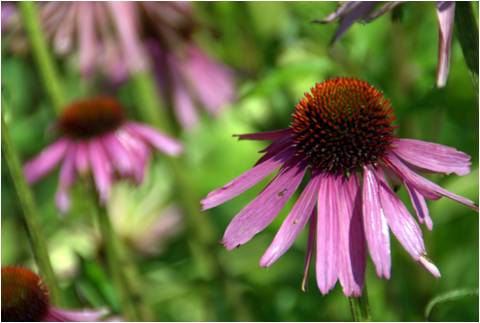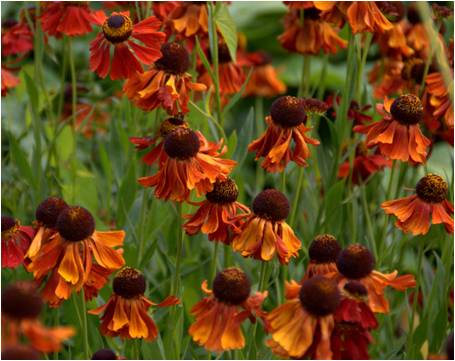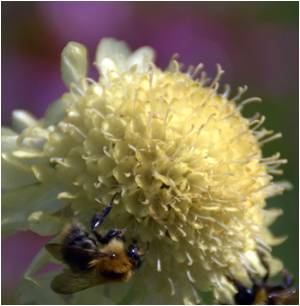Ok, so I’ve been neglecting this blog for a couple of weeks…. well sometimes I have to do some real work. I guess most people consider summer to be June, July and August, so I’ve left it a bit late to write about summer planting, but here goes…….
If you live in the south of England you might have paid a visit to the gardens at Exbury, in the New Forest. It’s perhaps best known for its trees and shrubs, especially rhododendrons, azaleas, camellias and acers, but there is a lot more besides – last year I actually bought a season ticket. With so much on offer, the herbaceous borders next to the house are easily overlooked, but I think they’re really quite special. Here is just one example.
There are some glorious hot summer colours here, with tall architectural elements adding another dimension. Its a sandy acid soil, and most of these plants will thrive best in well drained, sunny conditions.
Masses of vibrant yellow and orange lilies fill the foreground, including the bright orange Lilium “Brunello”. The sword-like leaves and upright trumpet shaped flowers of the lilies contrast with the softer clusters of green leaves and bright yellow-green bracts of Euphorbia cornigera “Goldener Turm” – all interspersed with the tall, thin, spear-like stems of Pennesetum macrourum, whose thickened seed heads sway above the dense yellows and oranges and serve to lighten and enliven the whole effect.
In the middle distance the dark copper-red flowers of Helenium “Moerheim Beauty” combine well with the dark-centred pink daisy Echinacea purpurea “Magnus”, and a haze of round white Cephalaria gigantea lightens and enlivens the show, just as the Penesetum does.
In my view, an interesting example of how different plant structures and form combine to create something that is greater than the sum of the parts – without the Penesetum and Caphalaria, this would appear quite different – heavy and static.

